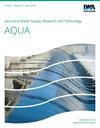不同灌溉制度下纳米颗粒对水稻产量和营养品质的影响
IF 4.3
Q2 Environmental Science
引用次数: 0
摘要
大米中的氨基酸分布是其营养价值的一个指标,在评价其整体营养品质中起着重要作用。然而,关于纳米颗粒(NPs)和各种灌溉制度如何影响水稻的营养价值和整体质量的研究有限。研究了不同灌溉方式和叶面喷施NPs对2个水稻品种精米产量、养分浓度和氨基酸分布的影响。结果表明,施罗迪品种的产量和营养成分均高于哈希米品种。减少灌溉显著降低稻米产量、营养元素和某些氨基酸(天冬酰胺、谷氨酸、丝氨酸、丙氨酸、组氨酸和精氨酸)含量,而增加其他氨基酸含量。而NPs处理,尤其是ZnONPs + SiO2NPs处理,籽粒产量和精米氨基酸含量均有显著提高。在矿质养分方面,SiO2NPs和ZnONPs + SiO2NPs处理降低了精米中的矿质养分,而ZnONPs处理提高了精米中Ca、Fe、Mg和N的含量,降低了其他元素的含量。因此,我们的研究结果表明,SiO2NPs和ZnONPs是有希望提高精米产量和营养品质的NPs,特别是在缺水条件下。本文章由计算机程序翻译,如有差异,请以英文原文为准。
The application of nanoparticles on the yield and nutritional quality of rice under different irrigation regimes
The amino acid profile in rice serves as an indicator of its nutritional worth, playing a significant role in evaluating its overall nutritional quality. However, there has been limited research on how nanoparticles (NPs) and various irrigation regimes affect the nutritional value and overall quality of rice. In the present study, the effects of different irrigation regimes and foliar spray of NPs on the yield, nutrient concentration, and amino acid profile of milled rice in two rice cultivars were evaluated. The results showed that the Shirodi cultivar had a higher yield and nutrients compared to the Hashemi cultivar. Reducing irrigation significantly lowered the grain yield, nutrient elements, and some amino acids (asparagine, glutamic acid, serine, alanine, histidine, and arginine) in milled rice while increasing other amino acids. However, NPs treatments, especially ZnONPs + SiO2NPs treatment, increased grain yield and amino acids in milled rice. Regarding mineral nutrients, SiO2NPs and ZnONPs + SiO2NPs treatments decreased mineral nutrients in milled rice, while ZnONPs treatment increased Ca, Fe, Mg, and N and decreased the content of other elements in milled rice. Therefore, our findings showed that SiO2NPs and ZnONPs are promising NPs that can improve the yield and nutritional quality of milled rice, especially in water-deficient conditions.
求助全文
通过发布文献求助,成功后即可免费获取论文全文。
去求助
来源期刊
CiteScore
4.70
自引率
0.00%
发文量
74
审稿时长
4.5 months
期刊介绍:
Journal of Water Supply: Research and Technology - Aqua publishes peer-reviewed scientific & technical, review, and practical/ operational papers dealing with research and development in water supply technology and management, including economics, training and public relations on a national and international level.

 求助内容:
求助内容: 应助结果提醒方式:
应助结果提醒方式:


